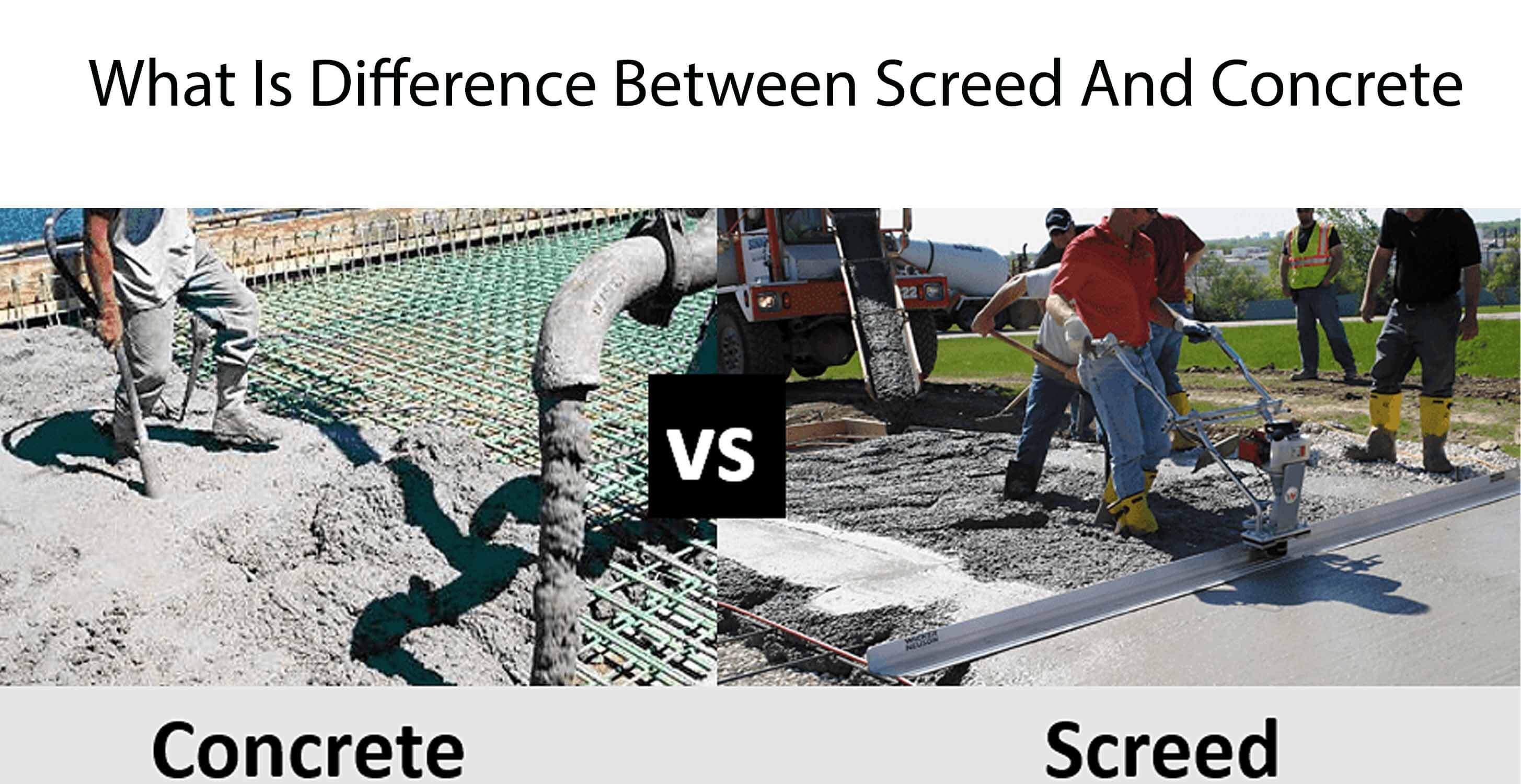1- Both screed and concrete are normally used in the construction industry and formed of same basic ingredients like water, cement, and aggregates. While both are used in construction purpose but what makes them different is the size of aggregates, the cement grade, mix consistency, and of course their intended application or use.
2- Due to the presence of coarse aggregates in concrete, its texture is rougher than that of the screed. Normally, the stones used in concrete are 20mm in size or less. You can easily observe this when it is still liquid. On the other hand, screed has the appearance of soft soil and is much smoother. Its contents are fine sand and cement. The size of grains used here is about 4mm when dry.
3- Concrete is normally laid much thicker than a screed, with a minimum recommended thickness of 100mm for domestic use, and up to double that thickness for areas in which there is heavy footfall. As screed is most commonly used as a finish on internal floors, it is usually 50–100mm thick (on average, about 75mm).
4- The mix consistency of concrete is made to be wetter than that of the screed. The latter should have a consistency that is non-crumbly and semi-dry.
5- In order to apply concrete, you’ll require specialized equipment. you’ll need to hire this equipment. This means that a certain level of skill is required to be able to apply concrete. Conversely, a trowel can be used for the application of screed. Doesn’t need any experience or skill to apply screed.
6- Concrete in its simplest form is a rock-like mass formed by the hardening of cement space and aggregates mixed in a proportion of cement, sand, and gravel. A screed on the other hand is a thin layer of cement paste and sand/fine aggregates, laid on to a concrete floor base or underfloor heating to act as a smooth flat leveling surface for taking on the final floor finish.

